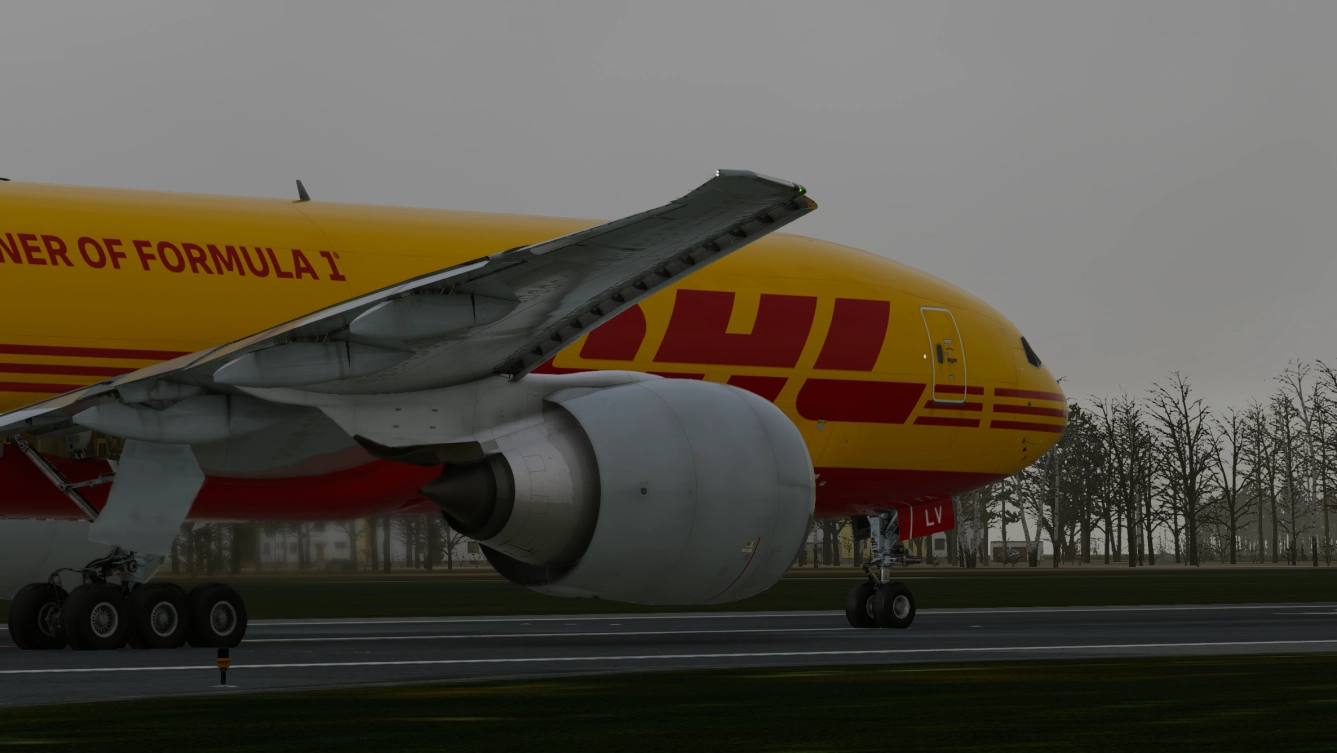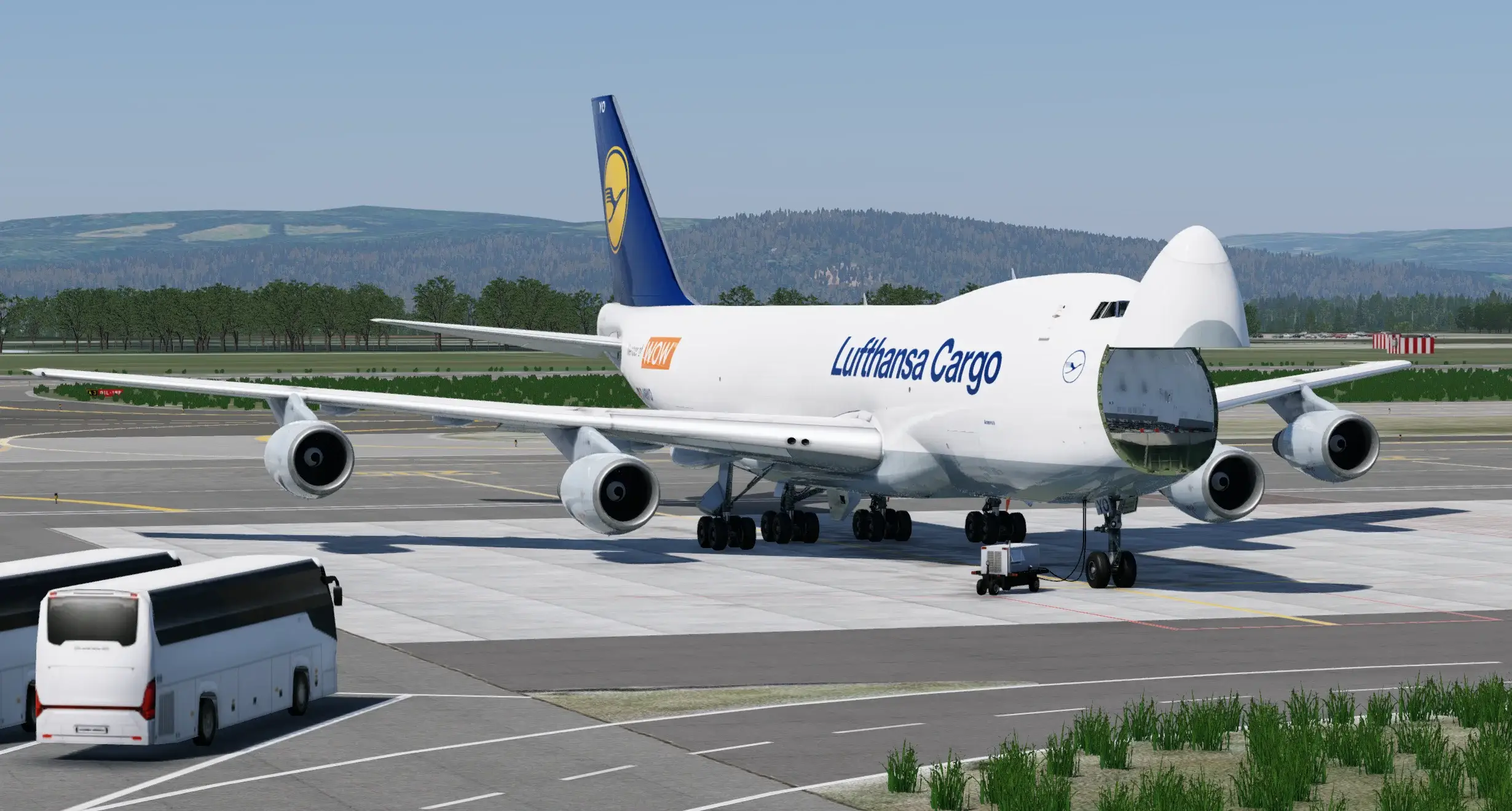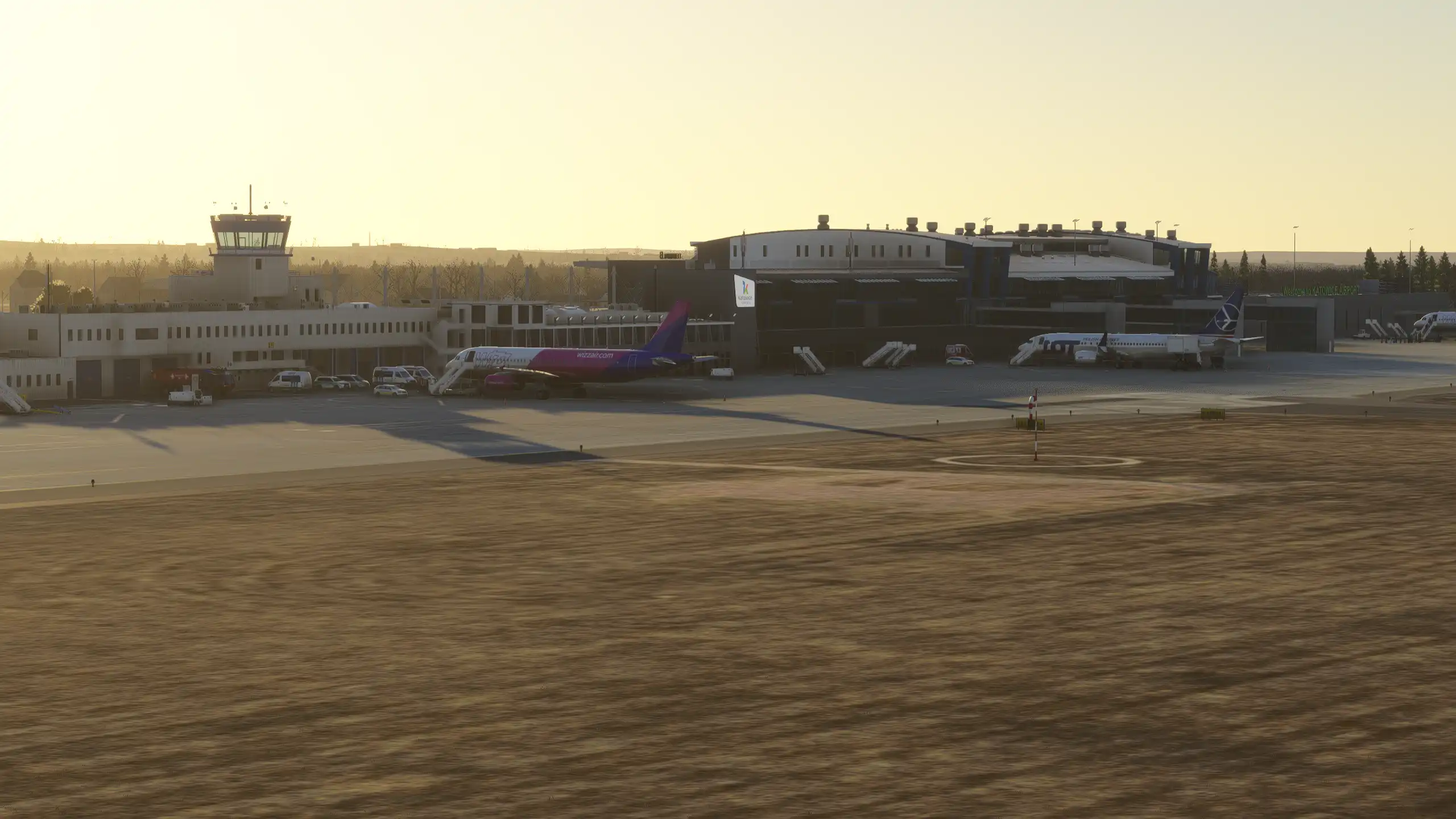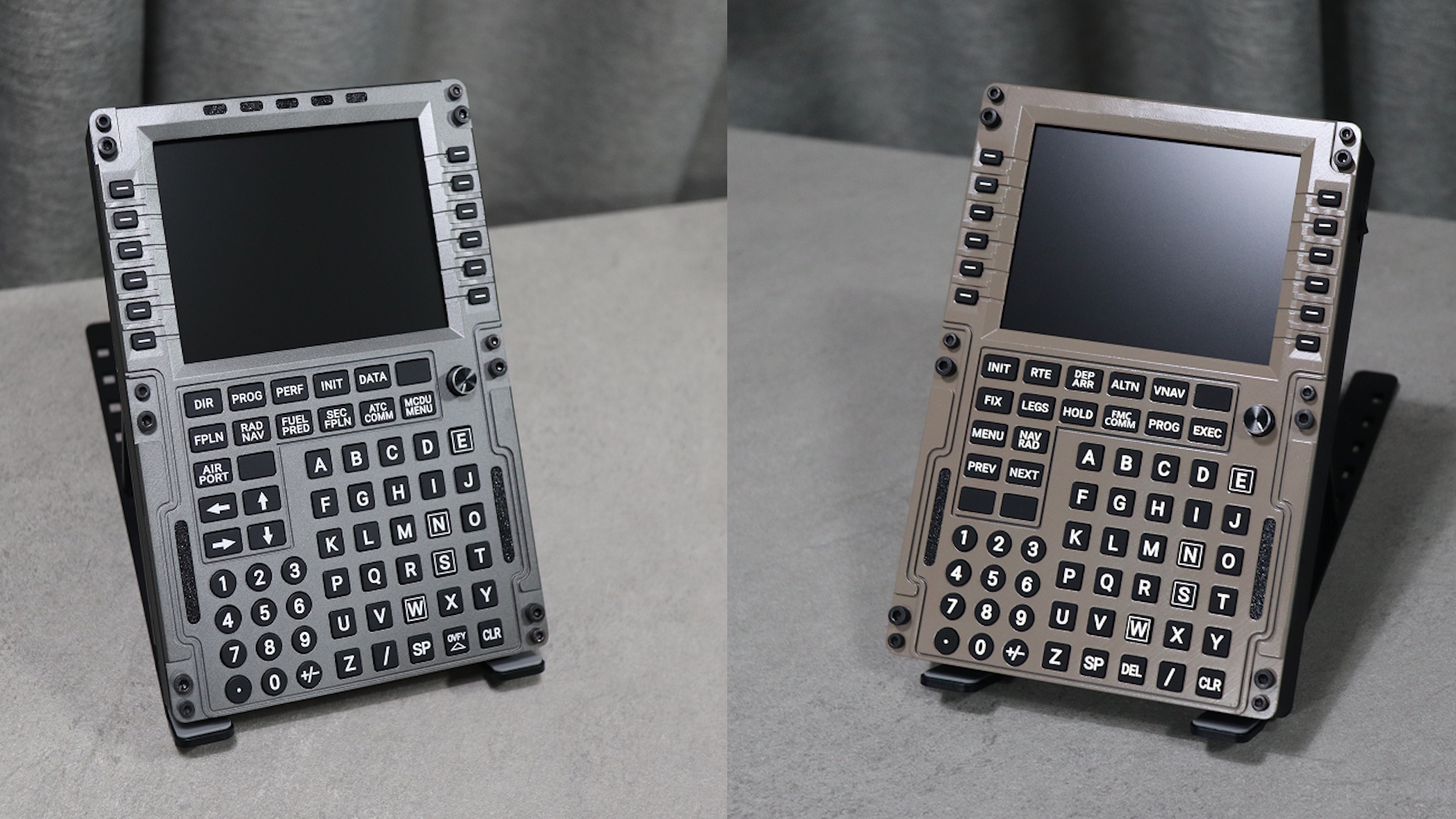Threshold Review: Verticalsim’s Ontario International Airport for MSFS
July 5, 2023
Introduction
Ontario International Airport (KONT) serves the region of San Bernardino/Riverside and Greater Los Angeles with a yearly average of 5.8 million passengers, ranking it within the ten busiest airports in California.

The airport was built on 190 hectares of land purchased by the city administration, and the Works Progress Administration funded the runways at a total cost of $350,000. An Army Air Corps airplane used the main runway for the first time in February 1942.

During its initial years, Ontario was a training base for Lockheed P-38 Lightnings and an operating base for P-51 Mustangs. That was during the height of the war (WW2).
It was then used as an aircraft storage center where the former warfighters would be either sold or scrapped, established by the Reconstruction Finance Corporation. It was one of five storages scattered throughout the United States.
The international status was granted in 1946 when the airport held trans-pacific cargo operations—the first cargo operation of many that would follow over the following decades to this very day. A few months later, a Pacific Overseas Airlines flight from Shanghai landed at the airport, inaugurating regular round-trip air service between the Orient and the United States.
Domestic scheduled service started in 1949 with Western Airlines, followed by Bonanza in 1955. Both airlines did not fly beyond Vegas, initially making it almost strictly inter-south Californian. That would only change in 1962 when Western started a non-stop route with a Lockheed Electra between Ontario and San Francisco.
Ontario and Los Angeles joined forces in 1967, making Ontario Intl part of the LA regional airport system, attracting many other airlines. A year later, they had their first scheduled jet flights, and Continental arrived in 1969 with direct flights to Denver and Chicago on a Boeing 720B. On the other hand, Air California started flying the 737 to San Jose. By 1970, Pacific Southwest, United, and American also operated scheduled flights out of Ontario.
Sixteen years later, the airport hosted the Concorde - yet briefly - during a promotional round-the-world flight.
In 1985, Los Angeles purchased the airport from Ontario, eventually renaming it a few years later to LA/Ontario International Airport to avoid causing confusion between the Californian city and the Canadian province.
In 1998, the administration opened a new and larger terminal, ultimately replacing and discontinuing the two older terminals once the new terminals 2 and 4 rolled out. The discontinued terminals now house the administration and the USO.
A few years later, Ontario Airport reached its golden age, peaking at 7.2 million passengers a year between 2005 and 2007, followed by a 40% decline in the subsequent years up until 2012 because of the 2008 crisis and its consequences, which included the bankruptcy of San Bernardino, a nearby city and one of the former traffic generators.
After a nearly decade-long drama between Los Angeles World Airports and the city of Ontario, the airport’s ownership was transferred to the Ontario International Airport Authority in November 2016, reverting its name to just Ontario International Airport.
A year after regaining control, the Ontario International Airport Authority stopped the declining figures and reverted the situation, experiencing faster growth than Los Angeles International.
As of 2023, the airport has two terminals with 26 gates, along with a separate international arrivals facility with two arrival-only gates.
Southwest Airlines holds the majority of the passenger market share with 41.93%, followed by American Airlines with 14.53%, and Frontier with 11.50%. Denver is the busiest destination, with 350,000 passengers, and Dallas and Phoenix are second and third, with 336,000 and 271,000, respectively.
ONT is also an important FedEx Express and UPS cargo hub, averaging 851,921 tonnes a year.
The scenery features an accurate rendition of the airport as of the current year, with custom taxi signs, several animations, parallax on non-essential areas to save fps, lod optimization with framerate in mind, custom lighting, and custom jetways with gate and number placards.
Installation
The scenery is distributed through Contrail, with an intuitive one-click install once you have set up your MSFS Community folder path (or custom folder path if you use Addon Linker) in the settings menu.
First Impressions
As usual with my scenery reviews, I like to fly into the airport instead of loading in. The hop of choice was a nearly three-hour leg from Austin Bergstrom with a Southwest 737-800.

After an uneventful two-hour cruise, I descended into Ontario for the first time in Microsoft Flight Simulator. I can’t say I’m overly familiar with the airport, only having flown cargo legs in X-Plane, where I didn’t use Ortho4Xp; therefore, I didn’t know what to expect regarding landscape.

The arrival on runway 26R is stunning. Ontario is geographically privileged, rendering lovely wing shots as my airplane happily waltzed down the glideslope.
After a small battle with the wind, my airplane was down on the Ontarian floor for the first time in ages. The ground textures were sharp and convincing, and the same applied to the landside buildings on the left side of my airplane, where I aimed my drone camera to snap the first of many pictures that day.

Southwest parks on Terminal 4, meaning I would have to taxi until then, touring most of what Ontario offers. Many pictures were taken, significantly extending the taxi time to stand 404, where the real-world airplane had conveniently parked a few hours prior.


Many screenshots later, my airplane was finally on stand 404, and the passengers were happily deboarding as I once again took the drone for a spin, checking out the terminal’s interior, the custom jetways, ground textures, and so on. So far, so good.


Modeling / Texturing
Overall, the modeling is very good, be it the main terminals, the cargo area, or the landside buildings. It’s very consistent, with no neglected bits of places where it feels like they could have put in more effort.

Terminals 2 and 4 are wholly modeled, with an interior that perfectly balances detail and performance, ensuring a smooth experience on approach, taxi, and while parked. Terminal interiors are nice-to-haves rather than must-haves, and while they don’t entirely compromise the experience when absent or poorly made, they can devalue an otherwise nice scenery.





The textures are equally superb, with realistic wear and tear and rust. Metal surfaces and cities close to the ocean don’t go hand in hand, and it couldn’t be any different. It’s a very neat detail that genuinely increases the immersion. Real-life jetways are hardly pristine, after all.





The same applies to the ground markings, which truly look the part. As accurate as it gets.



The cargo areas are also nicely reproduced, with accurate markings and parking layouts, sporting a nice amount of ground clutter to make it look like a bustling environment.




Night Lighting
The night lighting is consistently good throughout the entire scenery, be it the terminals, the cargo areas, or the hangars. Everything is realistically lit during the night.




The taxiway signage is also illuminated adequately at night, making navigating the airport effortless.


The hangars look very photorealistic with that combination of convincing night lighting and weathering on the textures.




Performance
Verticalsim’s Ontario runs very well on my system (32 GB RAM, Ryzen 7 3700X, RTX 3080 10 GB), with no noticeable frame drops on approach, landing, taxiing, or around the terminals. It’s formidably optimized, given its scale and location within a photogrammetric zone.

Conclusion
KONT retails for $19.99 on their website, which is more than fair given the amount of detail brought to the table and the attention to tiny things like rust on the jetways, which do so much immersion-wise. A must-have addition to your MSFS library, especially if you are a Southwest Airlines aficionado.

A huge thank you to Verticalsim for providing us with a review copy!
Share this page
COMMENT ADVISORY:
Threshold encourages informed discussion and debate - though this can only happen if all commenters remain civil when voicing their opinions.












